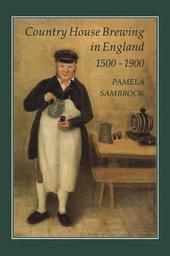
|
Country House Brewing in England, 1500-1900
Hardback
Main Details
| Title |
Country House Brewing in England, 1500-1900
|
| Authors and Contributors |
By (author) Pamela Sambrook
|
| Physical Properties |
|
| Category/Genre | Beer |
|---|
| ISBN/Barcode |
9781852851279
|
| Classifications | Dewey:641.230942 |
|---|
| Audience | | Undergraduate | | Postgraduate, Research & Scholarly | | Professional & Vocational | |
|---|
|
Publishing Details |
| Publisher |
Bloomsbury Publishing PLC
|
| Imprint |
Hambledon Continuum
|
| Publication Date |
1 July 1996 |
| Publication Country |
United Kingdom
|
Description
Until the 18th century or even later, beer was the staple drink of most men and women at all levels of society. Tea and coffee were expensive luxuries while water might well carry disease. To supply the needs of both owners and servants, every country house with an accessible source of water had a brewhouse, usually close at hand. Although many of the brewhouses still stand, in some cases with the original brewing vessels (as at Lacock and Charlecote), their habitual conversion to other uses has allowed them to be ignored. Yet they are distinctive buildings - as much part of a country house as an ice-house or stables - which need both to be recognized and preserved. The scale of brewing in country houses, which went on to a surprisingly late date in the 19th century (with odd survivals, such as Hickleton in Yorkshire, in the 20th), was often considerable, if small besides that of commercial brewing. Copious records for both brewing and consumption exist. Pamela Sambrook describes the brewing equipment, such as coppers, mash tuns, underbacks and coolers; the types of beers brewed, from strong ale to small beer, and how they were kept; and the brewers themselves, their skills and attitudes. English Country House Brewing, 1500-1900 shows the role beer played in the life of the country house, with beer allowances and beer money an integral part of servants' rewards. Generous allowances were made for arduous tasks, such as harvesting. For celebrations, such as the heir's coming of age, extra-strong ale was provided. This book, which is heavily illustrated, is an important and original contribution to architectural, brewing and social history.
|